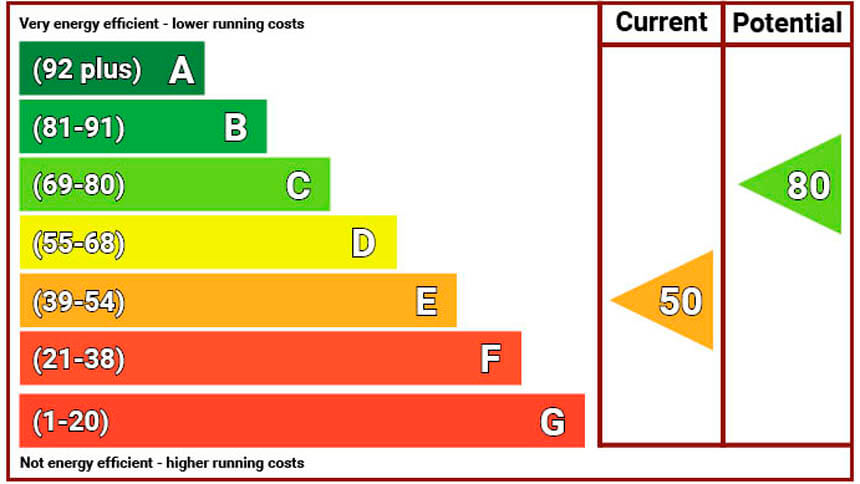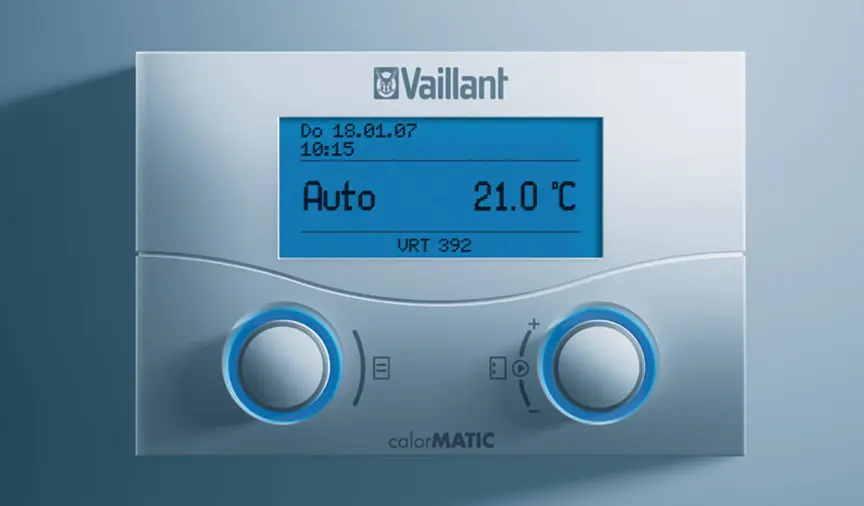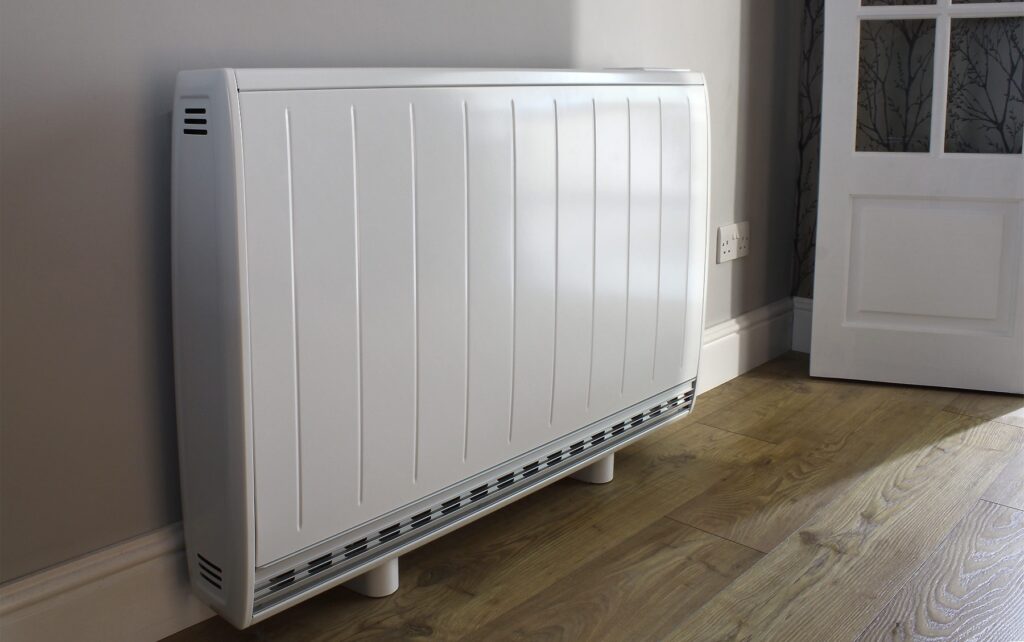The Minimum Energy Efficiency Standard (MEES) Regulations have been in place since 2018, requiring residential landlords to ensure their rental properties meet a minimum EPC rating of E or above. This was a significant step towards improving the energy efficiency of the UK’s housing stock and reducing carbon emissions. From April 2023 these requirements are extended to ALL commercial properties (including existing leases) , and they will also be required to meet the minimum EPC rating of E.
In addition, with the housing sector still responsible for a significant proportion of the country’s emissions the government is now planning to introduce a follow-up bill that will set even stricter MEES standards
Under stricter new regulations, which are expected to come into force in the coming years properties not meeting the required minimum EPC rating will have to be upgraded in order to be used as rental properties. Landlords and letting agents will have to take steps to improve the energy efficiency of their properties, which may include upgrading insulation and installing new heating systems.
These new regulations will have a significant impact on landlords and letting agents, who will need to invest in energy efficiency improvements in order to comply with the new standards. However, there are also benefits to be gained from improving the energy efficiency of rental properties, including reduced energy bills for tenants and increased property values.
In this article, we outline how the new regulations are expected to affect landlords and letting agents, and provide guidance on how to ensure that rental properties meet the required minimum energy efficiency standards. We also discuss the benefits of energy efficiency improvements and the potential impact on the rental market.
Minimum Energy Efficiency Standards, private rented sector
This regulatory change to the minimum energy efficiency standards will have a significant impact on letting agents and the Private Rented Sector (PRS), according to reports 2.9 million homes will require improvements at an estimated average cost of £9,872 per home, equalling a total bill of £29 billion. Letting agents must take action now to ensure that sufficient improvements have been made in time and within means.
Introduction of the Minimum Energy Efficiency Standard
The government first announced their intention to introduce minimum energy efficiency requirements as part of the Energy Act 2011. However, it wasn’t until 1st April 2018 that MEES were enacted into law, making it mandatory for both residential and commercial property managers in England and Wales to ensure that their properties met the minimum standards outlined in The Energy Efficiency (Private Rented Property) Regulations 2015.
Minimum Energy Efficiency Standards, commercial property sector
The current MEES regulations for commercial properties state that all new leases (including lease renewals) must have an EPC rating of E and above from 1st of April 2018. From 1st of April 2023 the requirement will be extended to include all existing leases. This means that landlords of commercial properties will need to ensure their properties meet the minimum energy efficiency standard before they can be legally let to new or existing tenants.
From the 1st of April 2023 commercial properties will no longer be able to continue existing tenancies with EPC ratings below E (F or G ratings).
Minimum energy efficiency standards residential property sector
The current MEES regulations for residential properties require a minimum energy efficiency rating of E on the property’s Energy Performance Certificate (EPC). Landlords are required to ensure that their rental properties meet this minimum standard. However, the regulations are set to become stricter in the near future, it is expected by 2025 that all new tenancies will need to have an energy efficiency rating of at least C. This means before a new tenant can move into a property an EPC rating of C will need to be achieved. It does however allow existing and long term tenancies to continue until further changes. It is then expected that by 2028 all existing tenancies will need to meet this minimum energy efficiency standard as well, otherwise the tenancies cannot legally continue.

Why were MEES regulations introduced?
The two main motivations in increasing EPC ratings for the Minimum Energy Efficiency Standards (MEES) are related to the government’s Net Zero carbon strategy and the need to eliminate fuel poverty.
In order to achieve the country’s goal of having net zero greenhouse gas emissions by 2050 the homes within the UK need to decarbonise. Currently our 30 million housing stock contributes to 22 percent of the country’s overall greenhouse emissions. Retrofitting these homes with energy efficient appliances, low-carbon heating systems, and fabric first upgrades will require regulatory incentives to initiate
Inefficient properties coupled with the continuous rise in fuel bills means more and more people find themselves in fuel poverty. According to reports the number of households expected to be in fuel poverty this winter is nearly 12 million due to the energy price cap increase. Sustainable Warmth, part of the Government’s fuel poverty strategy, includes a grant scheme designed to get as many fuel poor homes as possible to a Band C.
How is MEES expected to affect rental properties?
According to a recent report by Shawbrook Bank nearly a quarter of landlords say their properties are currently rated D or below for energy efficiency, with a further quarter admitting they do not know their property’s Energy Performance Certificate (EPC) rating.
The proposed regulations would require landlords to improve their property’s energy efficiency rating to a C or above for all new tenancies by 2025 and for existing tenancies by 2028. It is however important to remember this has not yet been finalised and requires final approval from Parliament.
For landlords with older properties, making these improvements could be a costly exercise, with two in ten landlords saying they do not have the necessary funds required to begin refurbishments. Failure to make the necessary improvements could result in landlords being unable to rent their properties, potentially leaving them with properties that are un-mortgageable and unsellable, which could limit supply in the market. The report calls for guidance on what the EPC legislation means specifically for landlords, incentives to make changes and support from the government and industry.
It is estimated that less 3% of residential properties in the UK are below the required minimum EPC E rating, However when MEES changes to C it will exceed 50% of the private rented sector properties will become non-compliant if they are not upgraded. In order to implement these changes in time landlords require the correct guidance and support from the government and the industry.
The role Energy Performance Certificates (EPCs) play in MEES
Energy Performance Certificates (EPCs) are an integral part both determining Minimum Energy Efficiency Standard (MEES) for properties in the UK and providing guidance on the efficiency improvements to meet the minimum standard. MEES regulations require properties to have a statutory minimum energy rating before they can be rented out or sold.
EPCs provide a rating of a property’s energy efficiency, which is based on factors such as insulation, heating systems, hot water systems and lighting. They also provide recommendations for improving a property’s energy efficiency to meet the minimum energy standard.
Landlords must ensure their properties meet MEES regulations to avoid a financial penalty, but EPCs can also provide a range of benefits beyond compliance. For example a higher EPC rating can make a property more attractive to tenants, potentially leading to higher rental income and longer tenancies. EPCs can also help identify areas for improvement in a property’s energy efficiency, which can lead to a reduced in running costs and fuel bills. A sub-standard property is also improved in some instances by implementing efficiency improvements. For example, insulating a property and upgrading the heating system can help reduce condensation or damp, and remove the risk of mould.
Government enforcing the Minimum Energy Efficiency Standards
The UK government has committed an additional £4.3m in funding to local councils across England and Wales to clamp down on landlords renting out properties with low energy performance ratings. Since April 2020, it has been illegal for landlords to rent out homes with energy performance ratings lower than EPC Band E. Councils will use the funding to reach out to landlords with the worst performing properties. Some will even use thermal imaging drones for inspections of properties with significant heat loss.
Enforcement normally falls under the remit of the Private Sector Housing team at the local authority (i.e., the council) covering the property. The manager of a property expected to be in breach of MEES is issued with a compliance notice by the council. If non-compliance persists, the property will receive a penalty notice stipulating a fine. Many councils have released statements committing to enforcing MEES.
What are the MEES regulations exemptions and how will they change?
The current minimum standard for energy performance ratings of rental properties in the UK is EPC Band E, and landlords who fail to meet this standard can face a fine or penalty per property per breach. However, there are exemptions for landlords who cannot afford to make improvements, with a maximum spend cap of £3,500. This means if you have a property rating of F or G and you spent £3500 on efficiency improvements but were unable to increase the property minimum rating to an E, you can apply for an exemption.
The average cost of upgrading a property from EPC rating D to EPC rating C is estimated to be £9,872 per home, and there is a proposal to raise the maximum investment to £10,000 to fully cover the costs. This increase, combined with the recent tax changes to properties not in a limited company, increase in interest rates and removal of funding such as the Green Home Grant is likely to affect a large number of landlords and the private rented sector housing stock.
How can changes to MEES affect letting agents?
Letting agents play an important role in guiding and supporting landlords to prepare for the regulatory changes brought on by Minimum Energy Efficiency Standards (MEES). Failure to prepare could result in 50 percent of privately rented properties dropping below the property minimum standards and becoming unrentable, leading to drops in revenue and potential job losses for letting agents.
When MEES changes to a C rating and above, approximately half of the Private Rented Sector (PRS) will no longer be in compliance with MEES regulations. Nearly 3 million homes are expected to need their property rating improved with an estimated average cost of £10k per home, putting significant pressure on landlords. Without assistance, many landlords may be priced out of the market and letting agents may lose more than half of their inventory.
The ongoing energy crisis has already increased demand for efficiency improvements, and as the new deadlines approach builders and retrofitters will become even busier and more expensive. Letting agents are in a unique position to assist their landlords in this scenario by following the MEES timeline and planning ahead. Agents can provide an improved, differentiated service that helps landlords meet the new standards and protect their rental income by providing advice and support on the best improvements, as well as offering a trusted service with a guarantee of delivery.
Minimum Energy Efficiency Standards consultation
At Pyramid Solution we are committed to helping letting agents and landlords navigate the challenges and opportunities of MEES.
With a more than a decade’s experience in carrying out energy assessments for both domestic and non-domestic properties we have the expertise to assess you requirements to ensure we can achieve the highest possible EPC rating and energy efficiency within your budget.
In recent months we have been inundated with enquiries for EPC ratings and energy efficiency measures. As mentioned above the local authorities are spending more time and money on enforcing the MEES regulations. This combined with the requirement for property landlord licences has expedited the urgency to meet standards. We are able to offer a no obligation consultation service and a variety of services as outlined below to help you achieve your target.
Energy Performance Certificates (EPCs):
In many instances we have found the EPC registered on the property has been carried out several years prior, whether a residential or a commercial property an up to date EPC can provide clear guidance on MEES requirements.
The RdSAP (methodology used to calculated EPC ratings) has undertaken several changes in those years, and therefore to advise our customers accurately a new assessment needs to be carried out. However on completion of the assessment we create a draft EPC and do not lodge it to the central EPC Register.
Based on the recommendations on the EPC we work closely with landlords and letting agents to establish the most cost effective course of action to achieve the desired EPC rating.

Energy efficient boilers and heating controls
As approved installers of a number of high quality brands such as Vaillant and Baxi we are able to offer installation of high efficiency gas boilers of up to 93% efficiency, combined with heating controls such as Thermostatic radiator valves (TRVs) and room thermostats to achieve the required EPC rating. Recently, in a number of properties we have managed to achieve an EPC rating of C from existing E rated properties by replacing older boilers by the highest efficiency currently available on the market.

External Wall Insulation
When it comes to energy efficiency, the governments advice is a fabric first approach. A fabric-first approach is improving the fabric of the building itself before adding additional heating systems or other energy efficient technologies. This approach can help to reduce the energy demand of a property by improving insulation, air tightness and reducing any thermal bridging. By reducing the energy demand of a property, landlords can reduce energy bills and improve the energy efficiency rating of their property, making the property more desirable for prospective tenants.
As Weber approved and specialist installers we are able to offer a high quality product, with the highest level of BBA approval for Fire Protection available on the market.

High Heat Retention Storage Heaters
High heat retention storage heaters are a type of electric heater that can help reduce energy costs and increase energy efficiency. These heaters store heat during off peak hours, when electricity is cheaper, and release it during the day to heat a room.
High heat retention storage heaters are designed to store heat better than traditional storage heaters, which means that insulation is greatly improved. These heaters have a fan-assisted control that draws out heat from the core bricks for an extra boost of warmth, so you can feel the effects much faster. In addition, most high heat retention storage heaters come with an integrated back-up heater in case you run out of heat. This feature ensures that you can feel the effects of the heat for longer, and the heater can determine how much charge is required based on how often the back up heater gets used.
Unlike traditional storage heaters, high heat retention heaters are designed to be more responsive to the user’s needs. They can be programmed to release heat at specific times and temperatures, and some models can be controlled remotely using a smartphone app. This flexibility allows users to adjust the heating to suit their needs, reducing energy waste and costs.
High heat retention storage heaters are also compatible with renewable energy sources, such as solar panels, making them a good option for those looking to reduce their carbon footprint.
Aside form Air Source Heat Pumps these heaters are the best solution in complying with MEES for properties that do not have a gas supply.

Air Source Heat Pumps
An air source heat pump (ASHP) is a renewable heating technology that uses energy from the air outside to provide heat and hot water for homes and buildings. ASHPs work by extracting heat from the air outside, even when the temperature is as low as -15°C, and then compressing and transferring it to heat water or air for space heating and domestic hot water use.
Air source heat pumps combine with an unvented hot water cylinder to provide both hot water and heating to the property. The heating can be emitted either through radiators or underfloor heating. ASHPs typically operate at a lower temperature than gas boilers, with the heat delivered at temperatures between 35-50°C for space heating and 45-55°C for domestic hot water. This is lower than the temperature of water supplied by a gas boiler, which is typically around 60°C.
Because ASHPs operate at lower temperatures, they require less energy to produce the same amount of heat, which makes them more energy-efficient than gas boilers
Although the upfront cost of an ASHP can be higher compared to traditional gas boilers, they can save you money on your energy bills in the long run, as they use less energy to generate the same amount of heat.


